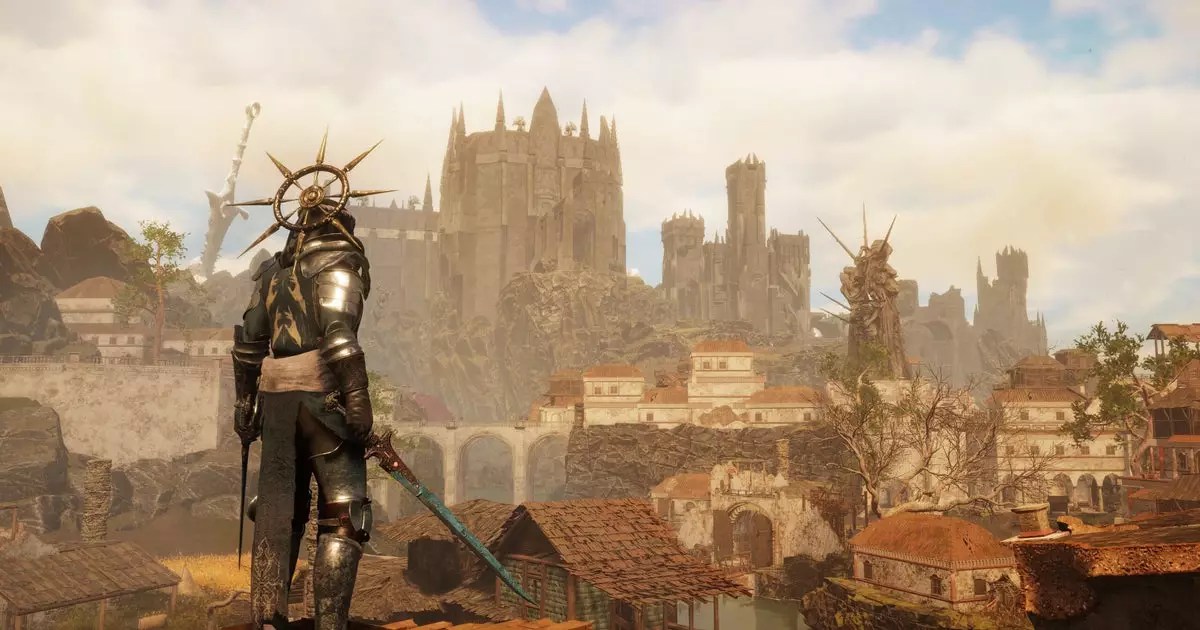In a gaming landscape increasingly monopolized by major players like Microsoft, the allure of indie gems is more potent than ever. Tainted Grail: The Fall of Avalon emerges as a beacon for those disenchanted with corporate juggernauts. Its predecessor, Tainted Grail: Conquest, was recognized as a hidden treasure that flew under the radar in 2021. As we stand on the veritable cusp of a larger gaming narrative, The Fall of Avalon seeks not only to captivate but to transport players into a world steeped in rich, dark lore reminiscent of Arthurian legend.
Recently polished for its full release after a promising early access phase, the game boasts an “Overwhelmingly Positive” consensus on Steam—a testament to its potential. Although still awaiting comprehensive reviews, the initial buzz paints a promising picture of an ambitious open-world RPG. With a demo available for eager adventurers, players can soak in the atmospheric trailers that highlight whimsical spellcasting, astonishing landscapes, and unique gameplay mechanics like fishing. As the release approaches, anticipation mounts for those seeking an immersive experience without the direct hand of a traditional gaming titan.
The Enigmatic World of Avalon
Tainted Grail: The Fall of Avalon operates in a post-Arthurian universe, more reminiscent of a troubled dream than a tale of triumph. Set a sprawling 600 years post-King Arthur’s fall, the game presents a haunting world ravaged by strife and disease. Players navigate through three distinct zones, each characterized by a palpable sense of decay and despair that shapes every interaction. The promise of a playtime ranging from 50 to 70 hours, alongside 200 side quests and diverse activities, suggests a canvas broad enough to satisfy even the most exploratory of players.
What intrigues me most about this title is its playful yet dark mechanics. One particularly engaging aspect is the idea that the world shifts dramatically at night, like a reluctant friend revealing their true self after sundown. The Wyrdness—a chaotic, primordial force—emerges during these hours, increasing the stakes by enhancing enemy difficulty. This concept feels refreshing; it embodies a form of psychological tension that resonates with players who thrive on challenge, akin perhaps to a rogue-like experience wrapped in RPG aesthetics.
Character Customization Meet Unbridled Chaos
Character customization in The Fall of Avalon promises a freedom rarely seen in RPGs of this caliber. The bold declarations made on the Steam page challenge players to engage in audacious gameplay styles that allow them to blend roles in outrageous ways. Want to mix alchemy and berserker rage? Dive right into the frenzy. Craft a blacksmith-mage striking down foes with summoned undead? That’s within reach. This level of flexibility fosters a sense of agency that older titles sometimes struggle to offer, raising the bar for player creativity in combat and storytelling.
However, it’s worth scrutinizing the motivations behind such freedoms. While the game’s narrative is marketed as “mature” and “morally grey,” one must question whether this depth is substantive or merely a façade meant to entice players. For many, these terms evoke memories of cliched plot lines—often shallow and riddled with predictable tropes. As someone who yearns for authentic storytelling, I find myself cautiously skeptical. Will Avalon craft a narrative that resonates emotionally or merely rehash tropes we’ve come to expect?
Environmental Design That Captivates
The art direction, with its spine-tingling theme of “everlasting autumn,” manages to entice the imagination. The decay and beauty coalesce to evoke a world that feels both inviting and deeply foreboding. The Red Death, a plague at the heart of this universe, adds an element of urgency to player actions. With priests resorting to grotesque experimentation to find a cure, the ethical complexity heightens, beckoning players toward an exploration of morality, power, and consequence that can elevate gameplay beyond mere combat.
What remains to be seen is the execution of these elements. Will the interactive experience deliver on the promise of rich narrative intertwined with engaging gameplay mechanics? While I look forward to the potential that Tainted Grail: The Fall of Avalon holds, I remain ever-watchful for the pitfalls that often accompany ambitious indie projects. In this evolving world, I urge players to revel in the uncanny thrill of the unknown and embrace the chaos it brings. The journey ahead is shaping up to be a wild ride into realms unseen.


Leave a Reply